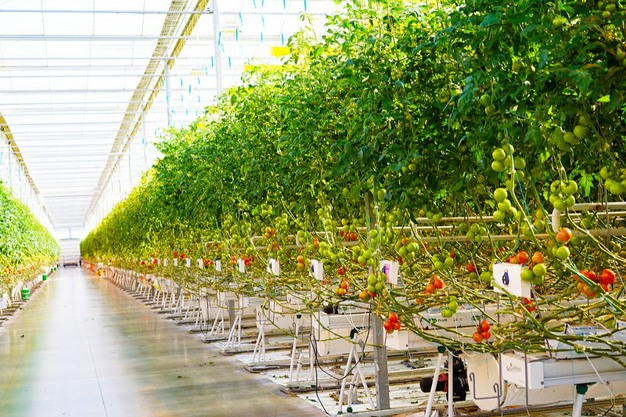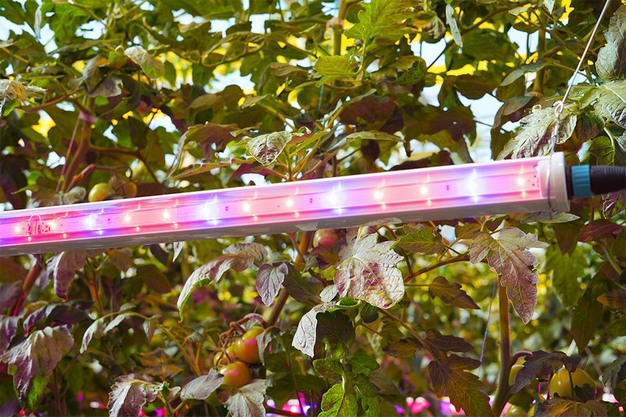What tools can help growers boost yields without increasing energy consumption or monthly bills? It might just be intra-canopy lighting. New research conducted by Leo Marcelis, his team at Wageningen UR, and researchers of Current shows that intra-canopy LED lighting, even when light input is the same, can increase yields by 14%.

"Essentially, intra-canopy lighting provides localized light for an under-illuminated part of the plant canopy. The plant has an under-utilized architecture which intra-canopy lighting now allows to be an energy source for the plant", says Leo Marcelis with Wageningen UR, who conducted the article in collaboration with lighting company Current. For the study, their new Arize® Integral ICL fixture was used, which directs an optimized light spectrum across a wide, 120-degree angle from both sides of the fixture.
The trial's goal was to simply compare LED toplight to two (2) other treatments that used differing ratios of LED toplight to LED intra-canopy lighting. The premise of the experiment was to determine where best to deploy light for tomato yields. "In other words, to find where a photon has its greatest light use efficiency for tomato production," says Leo.
Proper design and setup
Being a light study, a lot of thought was given to a proper design and setup by Dr. Leo Marcelis' lab at Wageningen University & Research. For a toplight, the light intensity is measured across a horizontal plane. Intra-canopy light level calibration is not so simple since it occupies a volume. To make sure that the intra-canopy light level was equally calibrated to the other toplight treatments, Dr. Marclis' team had to measure light levels along the z-plane on each side of the tomato row.
Current lights were used for all treatments of the trial. There was an HPS treatment as a control, while the other treatments utilized LED toplight or a combination of LED toplight and intra-canopy lighting, all created using Current lighting products. For all treatments, supplemental light accounted for about 60% of the total light (PAR) radiation. A light level of 300 µmols m-2 s-1 was utilized across all treatments.

Double-digit yield improvement
So what are the results? The results of this study show that intra-canopy LED lighting, even when light input is the same, can increase yields by 14%.
Tomorrow on the GreenTech, the researchers will dive further into their findings. Yet, they can already reveal their study found that by delivering 34% of the daily light integral (DLI) to mature leaves deep within the canopy, and 66% from top lighting (TL), two of the most common tomato cultivars produced an average of 14% more fruit than those with 100% top lighting. There was also no impact on quality or taste, with the harvested fruit receiving similar Brix scores for sugar content and also recording similar levels of acidity to the fruit grown under 100% TL.
"LED intra-canopy lighting, when deployed and used properly, is another tool and strategy for the grower to improve tomato yields even further in their operation," the researchers conclude. "This novel use of LED lighting changes the arithmetic of production by increasing yields."
"There has been some indication, historically, in the literature about the advantages and applications of intra-canopy lighting, so we knew that results from this trial would probably reflect this. Simply put, I would have been content with single-digit yield improvements (up to 7 or 8% yield improvement). Dr. Leo Marcelis and his team at Wageningen University & Research found an average yield improvement of 14% and were similarly excited by the results", says Hans Spalholz, Horticulture Scientist at Current.
The research will be presented tomorrow, June 14th, 2022, from 16:00-16:30 at the Vision Theatre on the GreenTech in Amsterdam.
Hans Spalholz (GE Current, A Daintree Company), Leo Marcelis (Wageningen University & Research) Investigating the Impact of Intra-canopy Lighting on Tomato Yields. A Research by WUR & Current.
For more information:
Current
nemanja.rodic@gecurrent.com
www.arizegrow.com/integral
